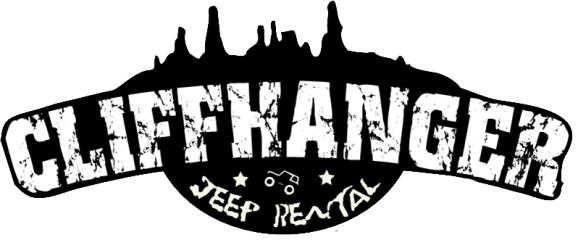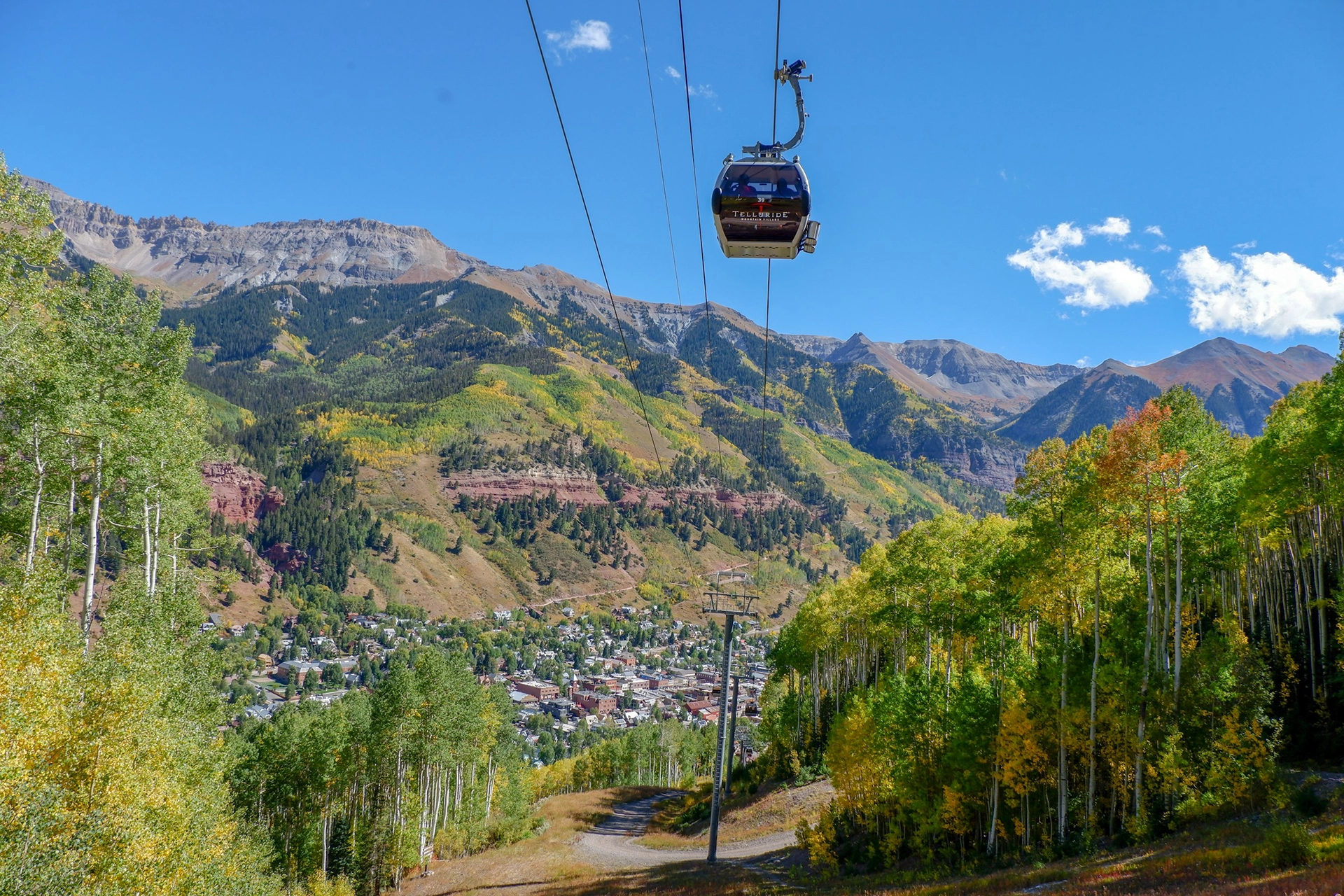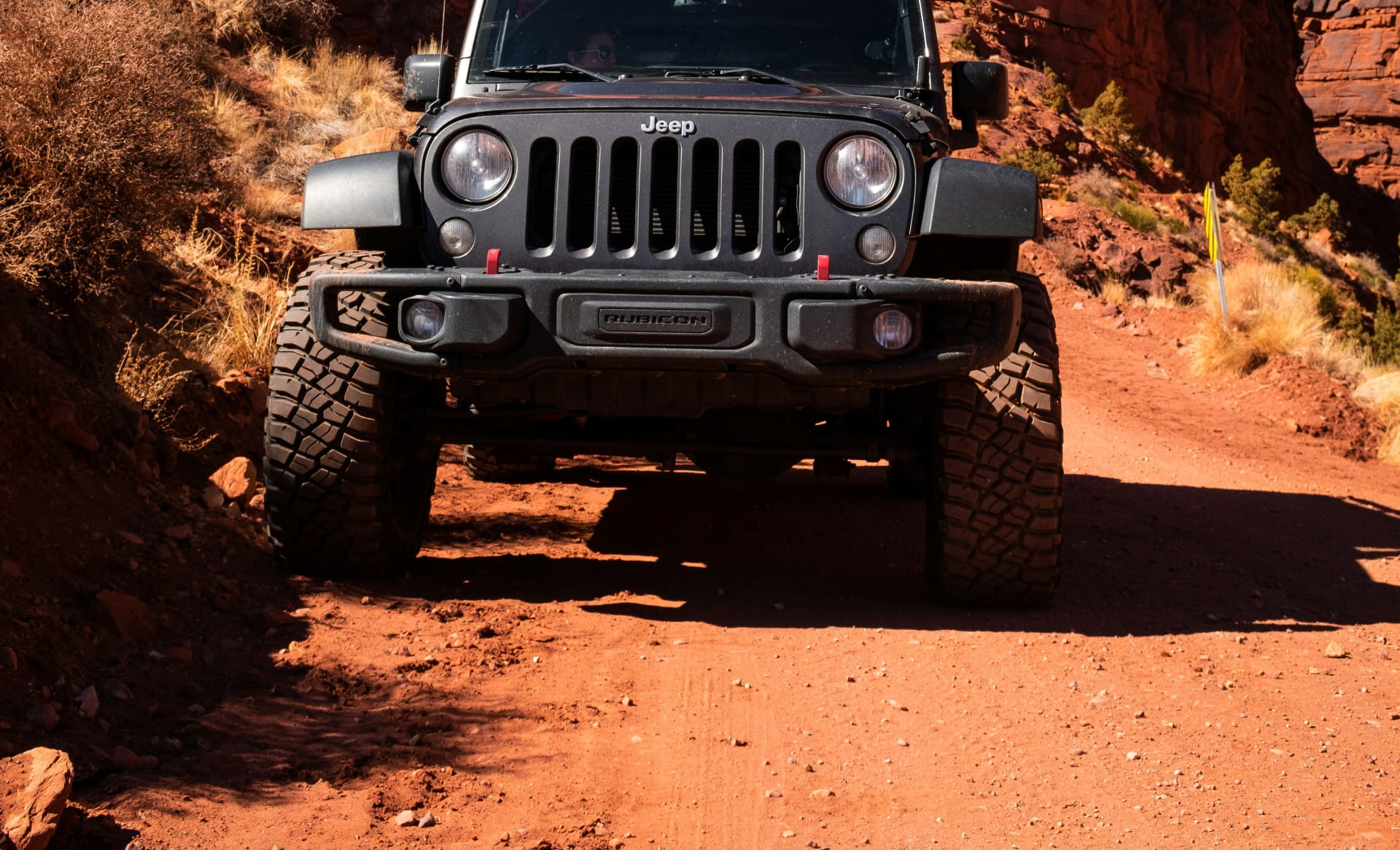Telluride Summer Activities: Where Mountains Meet Reality
At 6:30 AM in Telluride, something remarkable happens that no amount of Instagram filtering can replicate. The San Juan Mountains catch the first light and suddenly the entire valley becomes this living demonstration of why humans have always been drawn to high places. The peaks shift from gray to gold to something that makes you stop whatever you're doing and just watch. It's not magic—it's geology and atmospheric physics doing their thing—but the effect hits you in that primal part of your brain that remembers why we left the caves in the first place.
People travel thousands of miles to stand in this valley, and they're not just chasing pretty views. They're responding to something deeper: the way genuine wilderness makes you remember what your body was actually built for. Telluride in summer becomes a place where the gap between what we evolved to do and what we actually do gets temporarily smaller. You can hike until your lungs burn, bike trails that demand every bit of focus you have, or simply sit by a creek and realize how quiet the world can actually be.
This isn't about escaping your regular life—it's about remembering what your regular life could include.
The Telluride Experience: What Makes Summer Special Here
Telluride sits at 8,750 feet, which creates this perfect sweet spot where you get genuine alpine conditions without the oxygen-starved misery of higher elevations. Summer here runs cooler than most places—rarely breaking 80 degrees even in July—while the rest of the country melts. The air is thin enough that your body works harder and feels more alive, but not so thin that you spend your first day wondering if you're having a heart attack.
The geography here isn't just beautiful; it's functionally perfect for adventures:
Deep valleys that stay cool and protected for morning activities
High alpine zones accessible within a few hours of hiking
Multiple climate zones stacked vertically, creating different experiences based on elevation
Natural amphitheaters and bowls that concentrate wildlife and wildflowers
Rivers and creeks fed by snowmelt that stay cold all summer
The Mining Legacy That Built Today's Playground
Those trails you'll hike and bike didn't appear naturally. They started as mining roads carved by people hauling literal tons of equipment up impossible grades in the 1880s. The miners needed to reach every ridge, every hidden valley, every place where the mountains might be hiding gold or silver. What they left behind is this incredible network of paths that now connect you to places most mountain towns can't access without serious mountaineering skills.
Nature's Calendar
Summer in Telluride follows its own schedule, dictated by snowmelt and elevation rather than calendar dates. The high country becomes accessible in late June, wildflowers peak in July and August, and by September the aspen trees start their golden show. This isn't arbitrary timing—it's the result of thousands of years of adaptation to short growing seasons and intense UV exposure at elevation.
Did You Know? Telluride receives over 300 days of sunshine per year, but summer afternoons often bring brief thunderstorms that clear the air and cool everything down by evening.
Did You Know? The town's name comes from tellurium, a rare element found in the local gold ore, not from the phrase "to hell you ride" as local folklore claims.
Peak Season Reality Check
Summer brings crowds, and pretending otherwise would be dishonest. July and August see the highest visitor numbers, which means:
Accommodation prices reflect supply and demand economics
Popular trails get busy by mid-morning on weekends
Restaurant reservations become necessary rather than optional
Parking in town requires patience and sometimes creativity
Festival dates can transform the entire valley's energy and availability
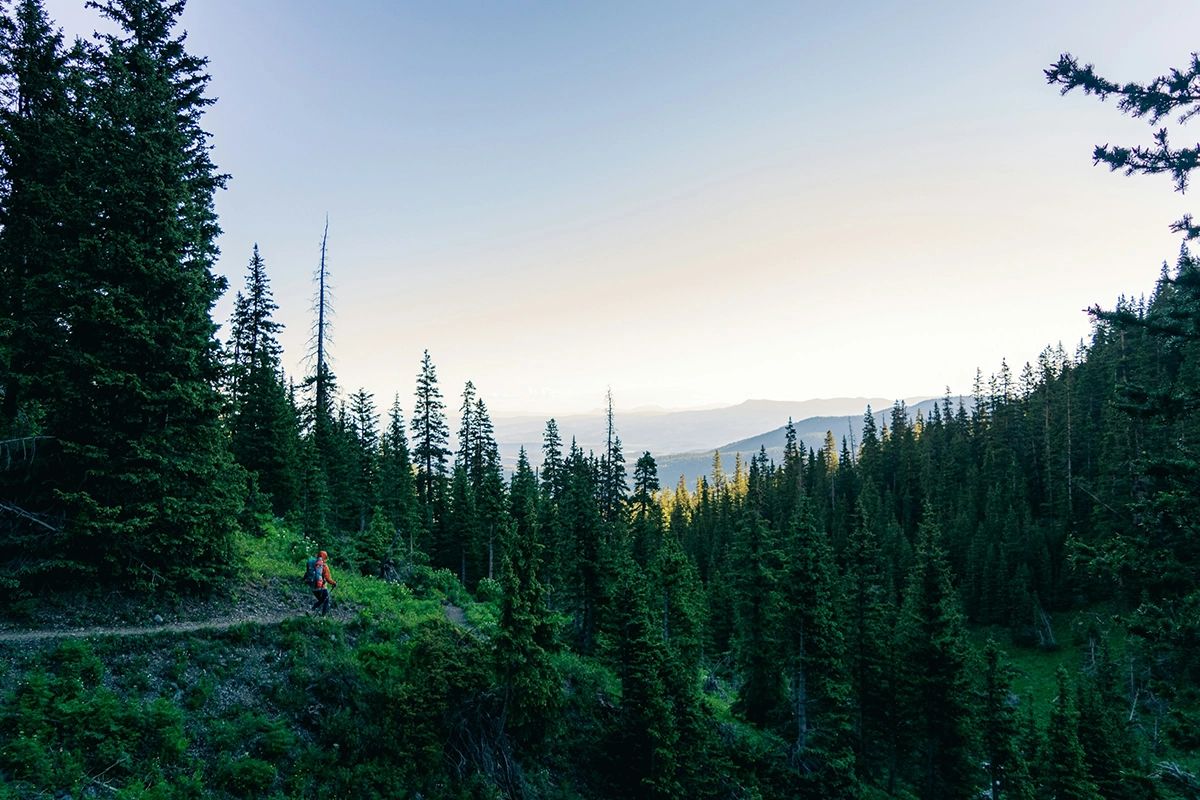
High Country Adventures
The San Juan Mountains around Telluride don't mess around. These peaks rise straight up from the valley floor with the kind of vertical relief that makes your neck hurt just looking at them. But here's what makes this place special: the trails actually take you up there. Most mountain towns make you admire the peaks from a distance. Telluride puts you on top of them.
Peak Bagging and Serious Hiking
The altitude here does something interesting to your relationship with effort. Every step above treeline requires more from your lungs, but the payoff scales up exponentially. You're not just getting exercise—you're entering ecosystems that exist nowhere else, where plants have spent millennia learning to survive conditions that would kill most living things.
Mount Wilson (14,246 feet): A technical scramble that separates hikers from mountaineers, requiring route-finding skills and comfort with exposure
Wilson Peak (14,017 feet): More straightforward but still demanding, with incredible views of the Needle Mountains
Bear Creek Trail to Bridal Veil Falls: A relatively gentle introduction that ends at Colorado's tallest free-falling waterfall
Alta Lakes Loop: Multiple alpine lakes connected by trails that showcase subalpine wildflower displays
Wasatch Trail: A high traverse that connects multiple basins without major elevation gain once you're up there
The thing about fourteeners is they demand respect, not just enthusiasm. Weather changes fast above treeline. What starts as a clear morning can turn into a lightning-producing thunderstorm by afternoon. Your body processes oxygen differently at 14,000 feet than it does at sea level, and that's not negotiable—it's basic physiology.
Pro Tips:
Start your hikes before sunrise during peak season to avoid afternoon storms and crowds
Bring layers even on warm days—temperature drops about 3.5 degrees for every 1,000 feet of elevation gain
Turn around if thunderclouds are building, regardless of how close you are to the summit
Download offline maps to your phone because cell service disappears quickly in the backcountry
Mountain Biking Territory
Telluride's bike trails were carved by gravity, water, and people who understood that the best way down a mountain is rarely the fastest way. The trail network here spans everything from mellow valley rides to technical descents that require both skill and a healthy relationship with risk.
Lift-served downhill at Telluride Ski Resort: Machine-built flow trails and technical challenges with 3,000+ feet of vertical descent
Bear Creek Trail: Moderate climbing with rewarding views, suitable for intermediate riders
Wasatch Trail: High-elevation singletrack that stays rideable most of the summer
Lizard Head Pass area: Cross-country routes through aspen groves and alpine meadows
San Juan Hut System: Multi-day bikepacking with hut-to-hut accommodation for those who prefer beds to tents
Mountain biking here teaches you something valuable about momentum and gravity. You learn to read terrain not just with your eyes but with your whole body, feeling how the bike responds to different surfaces and slopes. The thin air means your heart rate climbs faster, but it also means the views extend further than they do at lower elevations.
Pro Tips:
Rent quality bikes locally—shop staff know current trail conditions and can match equipment to your actual skill level
Book lift tickets in advance during peak season to avoid disappointment
Carry a repair kit and know how to use it—cell phone coverage is spotty on most trails
Consider guided rides for your first few days to learn the local trail etiquette and hidden gems
Valley Floor and Town-Based Activities
Not every mountain experience requires risking altitude sickness or testing your knees against gravity. Telluride's valley floor offers a different kind of engagement with this landscape—one that connects you to the human culture that has grown up alongside these peaks. The town itself becomes part of the adventure, a place where world-class performances happen against backdrops that make every venue feel like an outdoor amphitheater.
Festival Scene and Cultural Events
Something interesting happens when you bring music and film to a place surrounded by 13,000-foot peaks. The natural acoustics and dramatic settings don't just provide a backdrop—they become part of the performance itself. The valley walls reflect sound in ways that make outdoor concerts feel intimate even when thousands of people are listening.
Telluride Bluegrass Festival (June): Four days of acoustic music that transforms the town park into a temporary city of music lovers
Telluride Jazz Festival (August): A celebration that brings international artists to outdoor and indoor venues throughout town
Telluride Film Festival (Labor Day weekend): An intimate gathering that premieres major films in venues where you might sit next to the director
Free summer concerts: Weekly performances in the town park that showcase local and touring musicians
Mountain Film Festival (Memorial Day): Documentary screenings that celebrate adventure and environmental storytelling
The festival experience here differs from larger events because the mountain setting creates natural boundaries. You can't spread out infinitely, so people interact more. The thin air and high elevation also mean alcohol affects you differently, and the dramatic temperature swings between day and night keep everyone more alert to their surroundings.
Pro Tips:
Book accommodations months in advance for major festivals—the valley has limited lodging capacity
Bring warm layers for evening events even in summer, as temperatures can drop 30+ degrees after sunset
Festival passes often sell out, but individual show tickets sometimes become available closer to event dates
Pack comfortable shoes for walking on grass and uneven terrain at outdoor venues
Family-Friendly Adventures
Telluride's geography creates natural playground equipment on a massive scale. Kids respond to mountains differently than adults—they're less concerned with the technical challenge and more interested in the immediate sensory experience of being somewhere completely different from their usual environment.
Free gondola rides: A 13-minute journey between town and Mountain Village that showcases the valley from above
Valley Floor Trail: A paved path perfect for strollers and young walkers, following the San Miguel River
Town Park playground and facilities: Well-maintained equipment with mountain views that beat any suburban park
Telluride Aquatic Center: Indoor pool with lap lanes and recreational swimming when weather doesn't cooperate
Easy waterfall hikes: Accessible trails like the lower portions of Bear Creek that offer big rewards for small efforts
Mountain Village nature walks: Gentle trails through aspen groves with interpretive signs about local ecology
Children often adapt to altitude faster than adults, but they also dehydrate more quickly and may not recognize their own limits. The combination of intense UV radiation at elevation and the distraction of dramatic scenery means sun protection becomes more important, not less.
Pro Tips:
Start with shorter, easier activities to gauge how your family adjusts to the altitude
Pack extra snacks and water—mountain air increases appetite and thirst, especially for kids
Plan indoor backup activities for afternoon thunderstorms, which are common in summer
The gondola allows strollers, making Mountain Village accessible for families with very young children
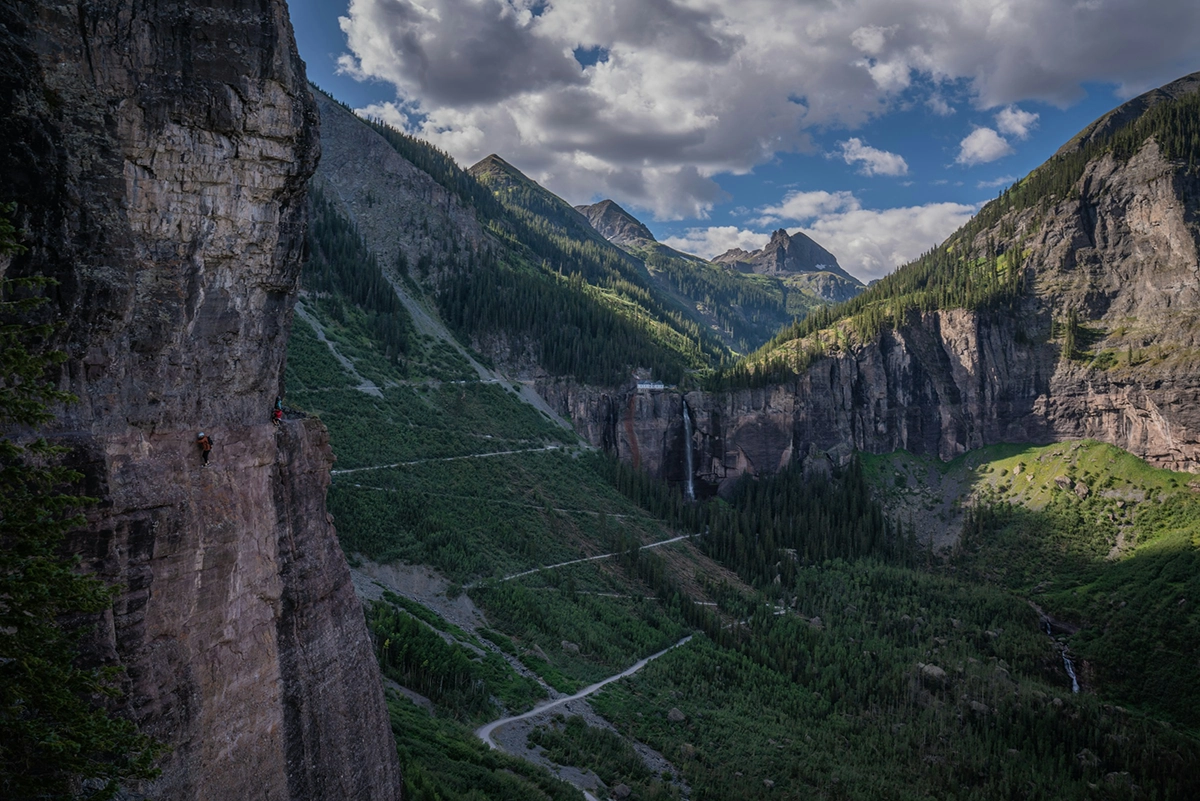
Adrenaline and Technical Adventures
Some mountain experiences require you to trust equipment, physics, and your own judgment in ways that modern life rarely demands. These activities strip away the safety nets we're accustomed to and put you in direct contact with consequences. The reward isn't just the adrenaline rush—it's the clarity that comes from operating in an environment where attention and skill actually matter.
Via Ferrata and Rock Climbing
Via ferrata translates to "iron road," which is a perfect description of what you're doing: following a fixed route up a cliff face using steel cables, rungs, and bridges. Telluride's via ferrata route takes you up the side of Ajax Peak, giving you the experience of technical climbing without requiring years of rope skills and gear knowledge.
Telluride Via Ferrata: A guided route up Ajax Peak featuring suspension bridges and vertical ladder sections
Local climbing areas: Traditional and sport routes on solid Entrada sandstone and volcanic rock formations
Guided instruction: Professional services that teach rope skills, anchor building, and route reading
Equipment rental: Full climbing gear available locally, including harnesses, helmets, and climbing shoes
Multi-pitch adventures: Longer routes for experienced climbers seeking full-day challenges
Rock climbing here teaches you something valuable about problem-solving under pressure. Each move requires you to assess holds, balance, and your body's position in three dimensions. The altitude adds an extra variable—your muscles tire faster, but the thin air also makes you more aware of your breathing and heart rate.
Pro Tips:
Book via ferrata experiences in advance, especially during peak season when weather windows are limited
Wear closed-toe shoes with good grip—approach shoes work better than hiking boots for most routes
Bring gloves for the via ferrata to protect your hands on steel cables and prevent blisters
Start with guided experiences even if you climb elsewhere—local rock has unique characteristics that affect technique
Off-Road Vehicle Adventures
The mining roads around Telluride weren't built for comfort—they were carved by people who needed to haul equipment to places where there definitely should not have been roads. Today, these routes offer some of Colorado's most scenic and challenging off-road experiences, connecting high alpine basins and ghost towns that would otherwise require serious hiking to reach.
Imogene Pass: A 17-mile route connecting Telluride to Ouray, crossing the Continental Divide at 13,114 feet
Black Bear Pass: Technical switchbacks with steep drop-offs, considered one of Colorado's most challenging passes
Ophir Pass: A moderate route through historic mining areas with excellent wildflower displays
ATV and UTV rentals: Side-by-side vehicles available for self-guided adventures with GPS route recommendations
Guided jeep tours: Professional drivers who know current road conditions and can access private mining claims
These routes demand respect for both the machinery and the environment. The combination of altitude, weather exposure, and technical terrain means equipment failures or wrong turns can have serious consequences. But they also provide access to landscapes that showcase the full vertical range of Rocky Mountain ecosystems in a single day.
Pro Tips:
Check current road conditions and closures—spring snowmelt and summer storms can make passes impassable quickly
Carry emergency supplies including extra food, water, and warm clothing regardless of weather forecasts
Download offline maps and carry physical backups—GPS signals can be unreliable in deep valleys
Choose guided tours for first-time visitors to learn route-finding skills and local driving techniques safely
Ready to experience these legendary passes yourself? Cliffhanger Jeep Rental in Telluride provides the reliable, well-maintained vehicles you need to tackle everything from gentle forest roads to the most technical alpine passes. Their locally-owned operation understands the unique demands of high-altitude off-roading and can match you with the right vehicle for your skill level and adventure goals. When you're planning to drive roads that were carved into cliffsides by 19th-century miners, you want equipment you can trust and local knowledge you can count on.
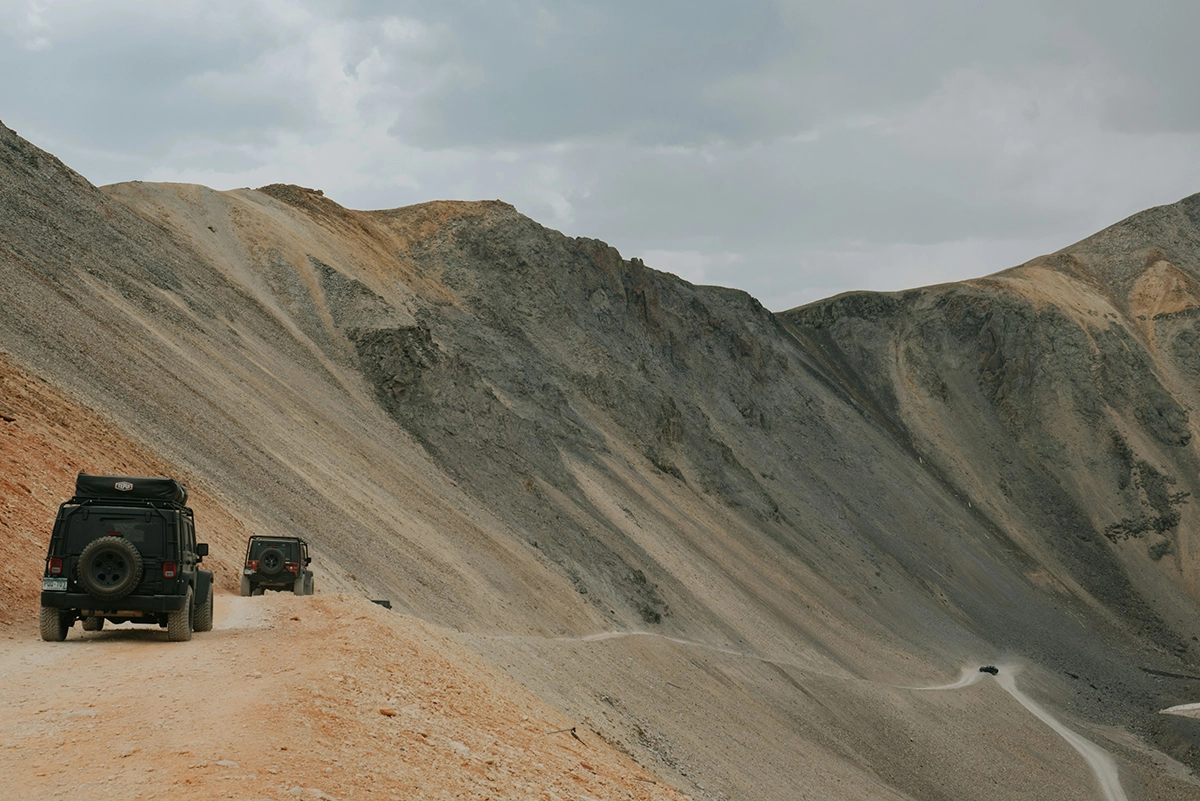
Water Activities and Summer Cooling
Water in the mountains behaves differently than water anywhere else. It's colder, cleaner, and carries the mineral signature of the rock it has traveled through. Mountain water also moves with purpose—gravity gives it urgency that flatland rivers never develop. In Telluride, water activities connect you to the fundamental physics of how these landscapes were carved and continue to change.
Rivers and Lakes
The San Miguel River starts as snowmelt high in the San Juan Mountains and gains character as it drops through the valley. By the time it reaches Telluride, it's cold enough to take your breath away but warm enough for determined swimmers. The alpine lakes scattered throughout the surrounding basins represent different stages of this same process—water temporarily paused on its journey downhill.
San Miguel River Town Park access: Gentle entry points for wading and fishing within walking distance of downtown
Bridal Veil Creek: A short hike leads to pools below Colorado's tallest free-falling waterfall
Alta Lakes: Three alpine lakes accessible by moderate hiking, offering pristine mountain reflections
Trout Lake: A larger body of water south of town, popular for stand-up paddleboarding and photography
Colorado fishing licenses: Required for anyone 16 and older, available online or at local sporting goods stores
Guided fly fishing: Local outfitters who know seasonal patterns and productive techniques for high-altitude streams
Mountain fishing teaches patience in a way that few other activities can match. The thin air, bright sun, and crystal-clear water mean trout can see you as easily as you can see them. Success requires understanding not just where fish might be, but how altitude affects insect hatches, water temperature, and fish behavior patterns.
Pro Tips:
Bring neoprene waders or waterproof boots—mountain streams stay cold even in summer heat
Purchase fishing licenses in advance online to avoid potential lines at local shops during peak season
Start early morning or late afternoon when insect activity peaks and fish feed more actively
Pack layers and rain gear—weather can change quickly near water at elevation
Swimming and Water Sports
Swimming in mountain water requires a different relationship with temperature and comfort than most people are used to. The shock of 55-degree water teaches you something immediate about your body's responses and limitations. But it also offers a kind of clarity and energy that warmer water simply can't provide.
Telluride Aquatic Center: Heated indoor pool with lap lanes, perfect for training or when weather doesn't cooperate
San Miguel River swimming holes: Natural pools formed by rock formations, though water temperatures rarely exceed 60 degrees
Pond at Telluride Town Park: Shallow water that warms slightly in summer, better for children and temperature-sensitive swimmers
Stand-up paddleboard rentals: Available for calm water bodies like Trout Lake and some river sections
River tubing opportunities: Limited options due to cold temperatures and technical terrain, but possible in specific sections
The combination of altitude, cold water, and intense UV reflection creates conditions that affect your body differently than swimming at lower elevations. Your heart rate increases faster, you tire more quickly, and hypothermia becomes a real consideration even on warm days.
Pro Tips:
Enter cold water gradually to avoid shock—your breathing response can be dangerous if you're not prepared
Limit time in natural water bodies to prevent hypothermia, even if you feel comfortable initially
Bring quick-dry towels and warm clothing for immediate post-swim comfort
Consider rash guards or thin wetsuits for extended time on or in the water to protect against UV exposure
The Practical Side of Mountain Adventures
Mountains operate on their own schedule, following patterns that have been consistent for thousands of years but can change dramatically within a single day. Understanding these rhythms isn't just about convenience—it's about safety, enjoyment, and making the most of the narrow windows when conditions align perfectly for specific activities.
Timing Your Visit
Telluride's summer season follows the physics of elevation and latitude rather than calendar dates. Snow doesn't disappear because it's officially June, and wildflowers don't bloom because tourism websites say they should. Weather here responds to elevation changes, jet stream patterns, and the simple fact that thinner air heats up and cools down faster than air at sea level.
June: High country access opens gradually, wildflowers begin at lower elevations, fewer crowds but variable weather
July: Peak wildflower season, all trails accessible, busiest month with highest accommodation prices
August: Most stable weather patterns, warm days and cool nights, festival season in full swing
September: Aspen trees begin changing, crisp mornings, excellent visibility but shorter days
Weather patterns: Afternoon thunderstorms common, morning starts typically clear, temperature swings of 40+ degrees between day and night
Crowd strategies: Weekday visits, early morning starts, shoulder season timing for popular activities
Altitude affects everything about timing in ways that aren't immediately obvious. Thunderstorms build faster and more dramatically above treeline. Your body needs more time to recover between activities. UV radiation is intense enough to cause sunburn in minutes, not hours. Even simple tasks like cooking food take longer because water boils at a lower temperature.
Lodging and Base Camp Setup
Where you stay in Telluride affects more than just your view—it determines your access to different activities and your relationship with the daily rhythms of a mountain town. The geography here creates distinct zones, each with advantages depending on what you want to accomplish during your visit.
Telluride town core: Walking distance to restaurants and festivals, historic character, limited parking
Mountain Village: Ski resort access, modern amenities, gondola connection to town, higher elevation
Camping options: Town Park Campground for convenience, dispersed camping in national forest for solitude
Vacation rentals: Range from historic miners' cabins to luxury homes, often better value for longer stays
Hotels and lodges: Full-service options with concierge assistance for activity planning and gear storage
The choice between staying in town versus Mountain Village isn't just about price or amenities—it's about altitude acclimatization and activity access. Mountain Village sits 2,000 feet higher than town, which can affect sleep quality and energy levels for the first few days. But it also puts you closer to high-country trailheads and eliminates the morning gondola ride for mountain activities.
Gear and Preparation
Mountain environments expose the gaps between gear that looks good and gear that actually works. The combination of intense UV radiation, rapid temperature changes, and thin air creates conditions that test equipment in ways that suburban adventures never do. Your body also operates differently here, requiring adaptations in clothing, nutrition, and pacing.
Essential clothing: Layering system with moisture-wicking base layers, insulating mid-layers, waterproof outer shell
Sun protection: High-SPF sunscreen, quality sunglasses, wide-brimmed hat for UV protection at elevation
Footwear: Sturdy hiking boots with ankle support, lighter shoes for town activities, waterproof options for stream crossings
Local gear rental: Mountain shops offering everything from bikes to climbing equipment, with staff who understand local conditions
Physical preparation: Cardiovascular conditioning weeks before arrival, hydration emphasis, gradual activity increase upon arrival
The mistake most people make is either over-packing or under-preparing. Mountain weather can change from sunny and 75 degrees to hail and 45 degrees in thirty minutes. But you also don't need to carry gear for every possible scenario on every adventure. Learning to read weather patterns and choose appropriate equipment for specific activities becomes part of the skill set that mountain environments teach you.
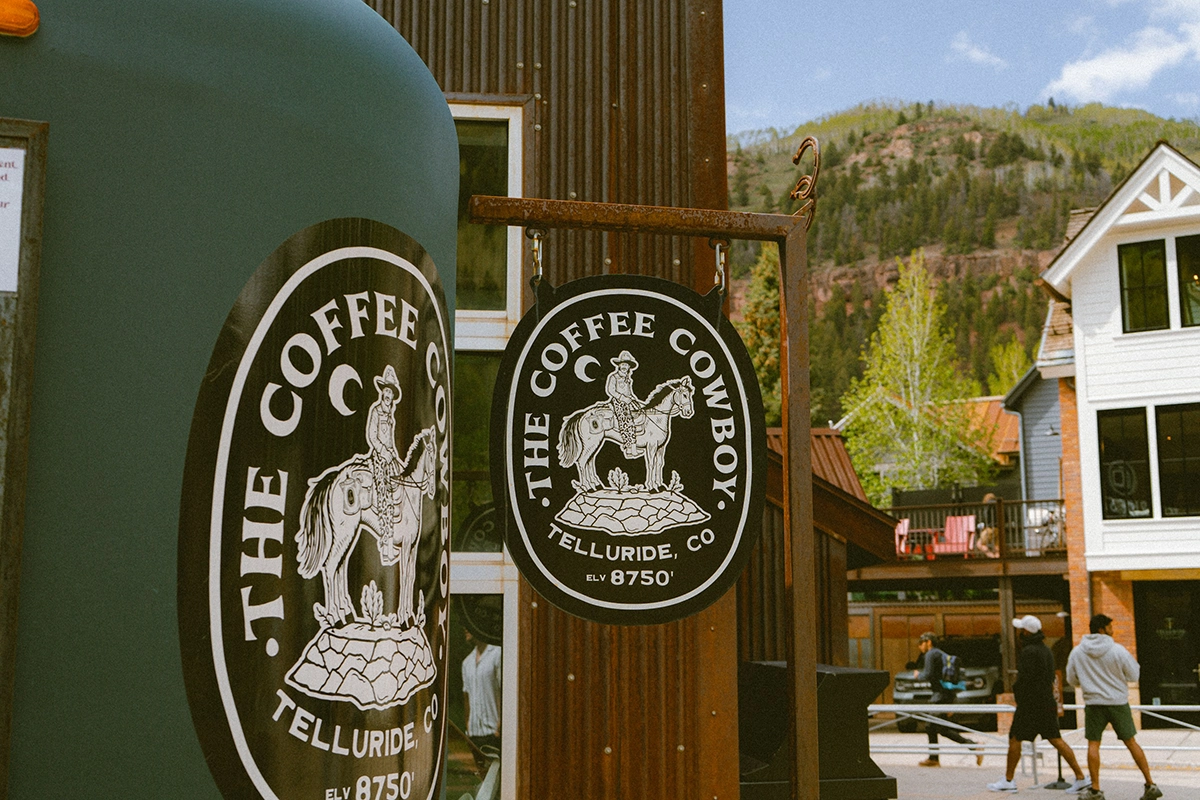
Food, Drink, and Recovery
At 8,750 feet, your body burns calories faster and craves different nutrients than it does at sea level. The combination of intense UV exposure, dry air, and physical exertion creates metabolic demands that surprise most visitors. Food becomes fuel in a more immediate way, and the quality of what you eat directly affects your energy levels and recovery time.
Mountain Town Dining
Telluride's restaurant scene reflects the reality of operating at elevation in a place where fresh ingredients must travel long distances but diners expect quality that matches the dramatic setting. The result is a food culture that emphasizes hearty, well-prepared meals designed to fuel mountain adventures rather than impress food bloggers.
Upscale dining: Restaurants featuring locally-sourced ingredients and wine lists curated for high-altitude palates
Casual mountain fare: Establishments specializing in substantial portions of comfort food that actually satisfies post-adventure hunger
Coffee shops and cafes: Early-opening spots with strong coffee and quick breakfast options for pre-dawn adventure starts
Grab-and-go markets: Prepared sandwiches, trail snacks, and energy foods designed for backcountry consumption
Local breweries: High-altitude brewing creates different flavor profiles, plus the social aspect of sharing adventure stories
Grocery stores: Full-service markets for self-catering, with surprisingly good selections given the remote location
Dining at elevation affects more than just your appetite. Alcohol hits harder in thin air, dehydration happens faster, and your taste buds actually function differently. Foods that taste mild at sea level can seem overly salty or sweet up here. Many restaurants adjust their recipes accordingly, creating flavor profiles specifically designed for high-altitude dining.
Mountain hunger is real hunger—your body is working harder at everything, including digesting food and maintaining core temperature.
Closing Thoughts
Most places make you choose between comfort and adventure, between accessibility and authentic wildness. Telluride refuses this trade-off. You can spend your morning on a technical climb above treeline, encountering landscapes that haven't changed significantly since the last ice age, then walk to dinner at a restaurant that sources ingredients from local farms. You can push your body to its limits on trails that demand everything you have, then recover in hot showers and comfortable beds. This isn't compromise—it's the rare combination of genuine wilderness experience with the infrastructure to support it safely.
The mountains around Telluride teach lessons that stick with you after you return to lower elevations. They show you what your body is actually capable of when you ask more from it. They demonstrate how weather, terrain, and preparation interact in ways that matter. They remind you that beauty and challenge often occupy the same places, and that the most rewarding experiences usually require you to be uncomfortable for a while. These aren't just vacation memories—they're recalibrations of what you think is possible.
What you discover in Telluride isn't just what the mountains can offer you, but what you're capable of offering back to them.
